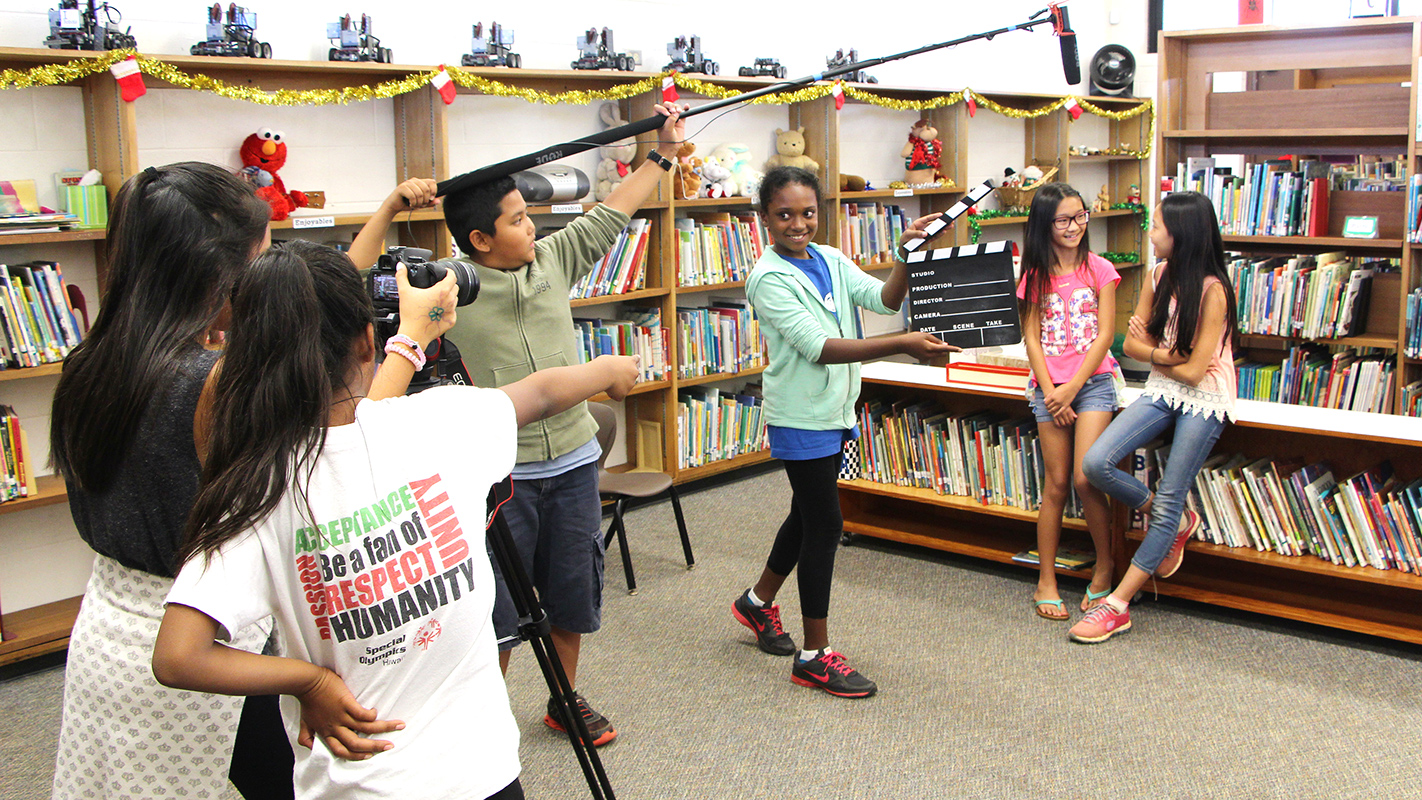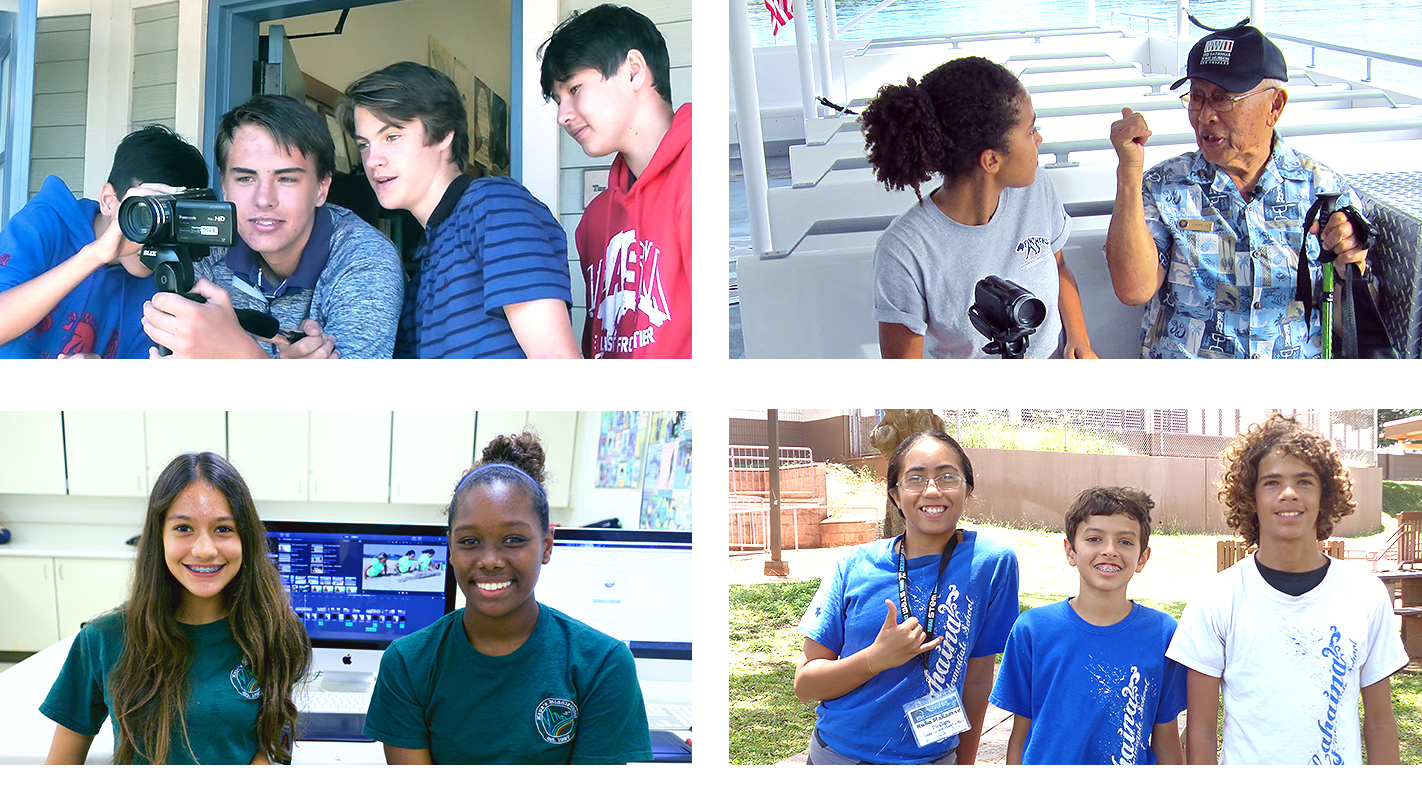The PBS Hawaiʻi Livestream is now available!
PBS Hawaiʻi Live TV


Students from O‘ahu’s Ka‘ala Elementary School
Launching a New Season
Thursday, February 7, 7:30 pm
When HIKI NŌ premiered on February 28, 2011, the HIKI NŌ students from Ka‘ala Elementary School who grace the cover of this program guide were toddlers. The Maui Waena Intermediate School students who hosted that first episode are now seniors in college. If the students have matured over the eight years HIKI NŌ has been on the air, so has the program.
Eight years ago, a weekly half-hour show in which middle and high school students write, report, shoot and edit PBS-quality news features on topics that they selected was inconceivable. Before going on the air, the premise of HIKI NŌ (which means “Can Do” in the Hawaiian language) was based on the supposition that the same professional quality found in news stories already being created at Wai‘anae High School’s Searider media program could be duplicated in other schools across the islands. Nobody knew if this grand experiment would work.
Not only did it work – it flourished beyond expectations and spread to 90 public, charter, and private schools throughout state – including four elementary schools!

Clockwise from top left: Students from Maui’s Seabury Hall School, A student from O‘ahu’s Aliamanu Middle School with Pearl Harbor attack witness Jimmy Lee at the World War II Valor in the Pacific National Monument, Students from Maui’s Lahaina Intermediate School, Students from Kauaʻi’s Kapaʻa Middle School
HIKI NŌ has thrived because of its unique intersection of two distinct worlds: The education world and the real-life world of a public television station that must uphold the standards of its broadcast and online content.
The rigorous experience of refining their stories to meet PBS national standards has helped HIKI NŌ students to dominate national digital media competitions. At the Student Television Network’s 2018 Fall Challenge, Hawai‘i’s HIKI NŌ schools garnered 33% of the awards given out for that competition. Hawai‘i took home the most awards of any state (13), followed by California (10) and Florida (5).
After the launch of the program, teachers and others from the education world began to notice that the HIKI NŌ experience taught students much more than how to tell stories with pictures and sound. It helped them to develop the basic skills needed to survive in the new, global economy: critical thinking, creative problem solving, adaptability, collaboration, teamwork and entrepreneurialism. The recognition that these skills are essential to students’ success in college and beyond has led to dynamic partnerships between HIKI NŌ/PBS Hawai‘i and the state’s Early College and P-20 programs.
A core group of HIKI NŌ teachers informally known as Hawai‘i Creative Media proved to be the most effective trainers of other HIKI NŌ teachers and their students. Their importance to the process became so evident that they organized themselves as a nonprofit organization – the Hawai‘i Creative Media Foundation – whose mission is to provide students and teachers across the state with training in basic digital media skills.
The state’s CTE (Career Technology Education) program and the Department of Education have recognized the importance of this training and are making plans to fund the Hawai‘i Creative Media-led teacher/student workshops. Up until now these workshops have been paid for by PBS Hawai‘i. This shift toward the educational institutions funding the training of its teachers and students represents a sea change for HIKI NŌ. It acknowledges that the educators are equal partners in the HIKI NŌ process and brings into focus the distinct roles that the two worlds must play: Hawai‘i’s educators teach Hawai‘i’s students, while PBS Hawai‘i provides them with the real-world, professional experience, plus statewide (broadcast) and worldwide (online) platforms for their voices to be heard.
